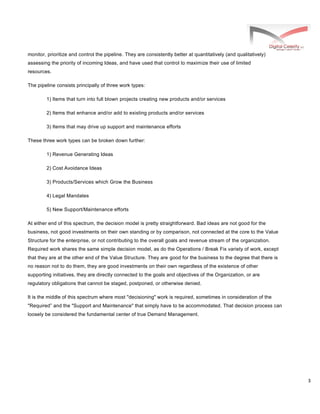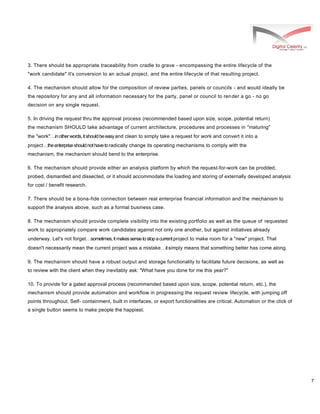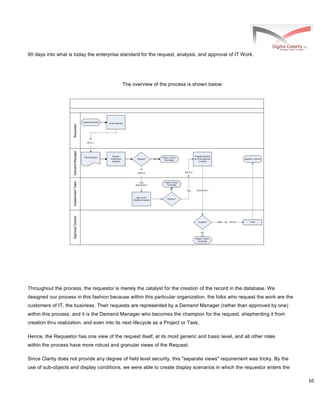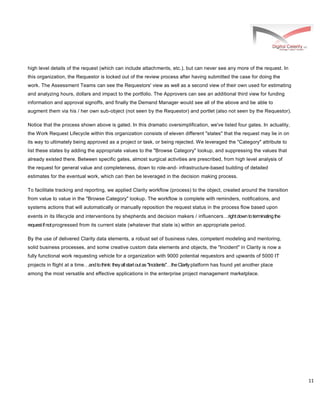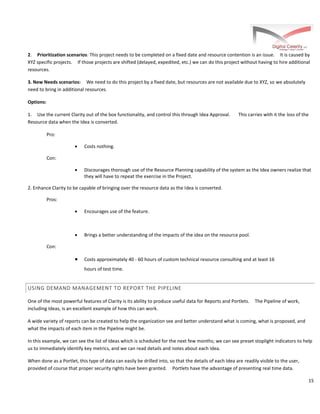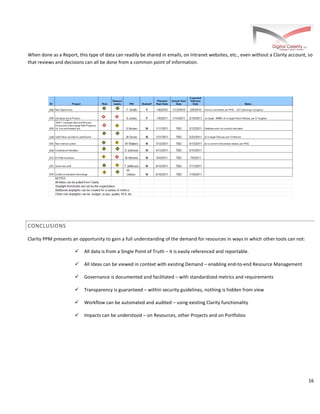This white paper discusses using CA Clarity PPM to manage demand and control the project pipeline. It describes understanding the different types of work that enter the pipeline, including projects, enhancements, and support/maintenance. True demand management is the first step to portfolio management and optimizing value. The paper outlines key characteristics an effective demand management mechanism should have, such as controlling access, providing traceability and visibility into the portfolio, supporting analysis of work candidates, and enabling a gated approval process. Implementing demand management with the right tool can help organizations make better decisions about what work to take on given their constraints and priorities.


